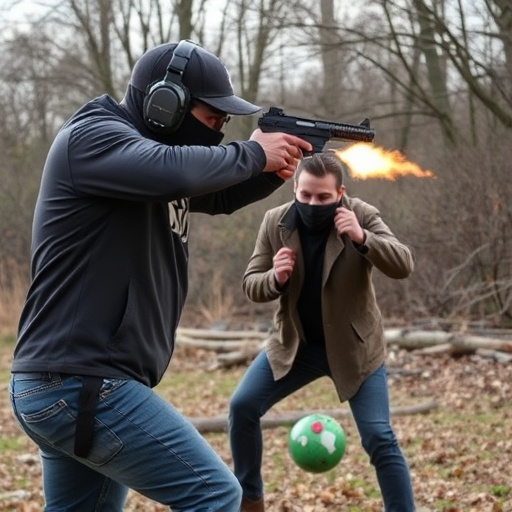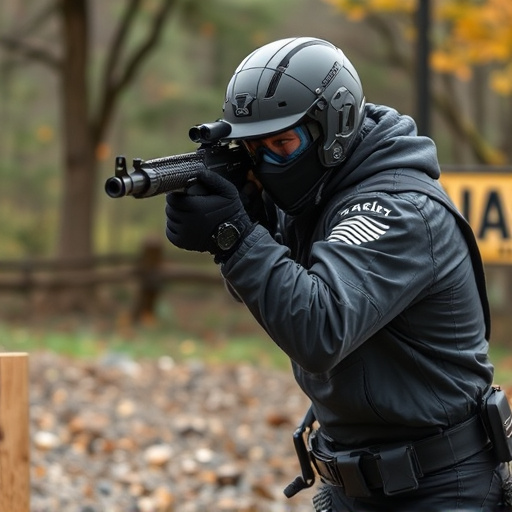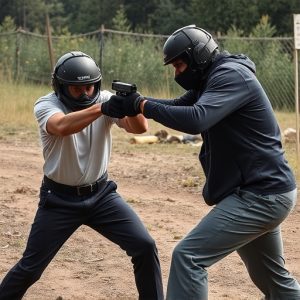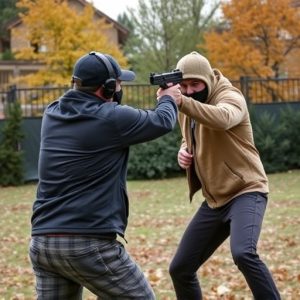Stun Gun Legalities by State: Easy Carry Options & Strict Restrictions
Stun gun laws vary widely across the US, so understanding your state's regulations is crucial b…….
Stun gun laws vary widely across the US, so understanding your state's regulations is crucial before purchasing. In permissive states like Texas, Florida, or Arizona, open carry with minimal restrictions is common, but checking local ordinances remains essential. Many other states have strict rules requiring permits, background checks, and specific training, making access to easy-to-carry, user-friendly stun guns challenging. To ensure responsible ownership, research compact designs, simple activation mechanisms, and state-specific laws to legally protect yourself without legal issues.
“Unraveling the legal landscape of stun guns state-by-state is essential for those seeking self-defense options. This comprehensive guide offers a detailed look at stun gun regulations, catering to both novice and seasoned owners. From understanding the laws to identifying states with liberal regulations, where purchasing and carrying are hassle-free, to navigating those with strict restrictions, we provide valuable insights.
Learn tips for responsible ownership and discover how to buy stun guns that meet your needs for easy carry and use.”
- Understanding Stun Gun Laws: A Comprehensive Overview
- States with Liberal Stun Gun Regulations: Where to Buy and Carry
- Limited Access: States with Strict Stun Gun Restrictions
- Navigating Legalities: Tips for Responsible Stun Gun Ownership
Understanding Stun Gun Laws: A Comprehensive Overview

Stun guns, also known as electroshock weapons, have gained popularity as personal defense tools due to their non-lethal nature and ease of use. However, understanding the legal landscape surrounding stun guns is crucial before considering buying one. Each state in the US has its own set of regulations and restrictions when it comes to owning and carrying stun guns. These laws vary widely in terms of permit requirements, age restrictions, and public spaces where stun guns are permitted.
When looking to buy a stun gun, it’s essential to focus on models that are easy to carry and use, ensuring compliance with local regulations. Some states allow open carry with a concealed weapon permit, while others may only permit stun guns in certain situations, such as self-defense within one’s home. Understanding these nuances is key to ensuring you purchase a stun gun that aligns with your state’s legal framework, making it a valuable tool for personal safety without inviting legal repercussions.
States with Liberal Stun Gun Regulations: Where to Buy and Carry

In several U.S. states, regulations surrounding stun guns are relatively liberal, offering residents greater accessibility for self-defense purposes. These states typically have less stringent rules regarding permit requirements and restrictions on where and how stun guns can be carried. As a result, buying stun guns that are easy to carry and use becomes a straightforward process for those living in these jurisdictions.
If you reside in a state with permissive stun gun laws, such as Texas, Florida, or Arizona, you can easily purchase a stun gun without a permit at many retail outlets and online stores. These states generally allow open carry with minimal regulations, making it convenient for responsible citizens to arm themselves for personal safety. Ensure that you familiarize yourself with local ordinances and always comply with federal laws when purchasing and carrying a stun gun.
Limited Access: States with Strict Stun Gun Restrictions

In many states across the US, purchasing and possessing a stun gun comes with stringent legal restrictions, making it difficult for individuals to exercise their right to self-defense. These regulations vary widely from one state to another, with some adopting incredibly strict measures that limit access to stun guns. States with the most restrictive laws often require extensive background checks, mandatory training, and permits before allowing citizens to own these devices.
For those seeking to buy stun guns for personal safety, the legal landscape can be a significant hurdle. Individuals living in states with tight restrictions might find it challenging to acquire easily carryable and usable stun guns. This scenario underscores the importance of understanding one’s rights and navigating state-specific regulations when considering self-defense tools like stun guns.
Navigating Legalities: Tips for Responsible Stun Gun Ownership

Navigating Legalities: Tips for Responsible Stun Gun Ownership
When considering purchasing a stun gun, it’s crucial to understand that state laws vary widely regarding their use and possession. To ensure responsible ownership, always check your local regulations before buying a stun gun. Some states have strict restrictions on who can own one and where they can be carried. For instance, some states only allow stun guns for certain individuals, like law enforcement or those with concealed carry permits. Others may limit the power output of stun devices, requiring you to buy models that comply with local laws.
To make your purchase easier, look for stun guns that are designed to be easily carried and used. Compact, lightweight designs that fit comfortably in a pocket or purse can help you stay prepared without drawing attention. Additionally, opt for models with simple activation mechanisms that require minimal training, ensuring you’re capable of using it effectively when needed. By staying informed about your state’s laws and selecting the right stun gun, you can be a responsible owner and better protect yourself in unexpected situations.
When considering purchasing a stun gun, it’s crucial to understand the legal landscape in your state. This guide has provided an in-depth look at stun gun regulations across the US, highlighting states with liberal policies that make acquisition and carrying these devices straightforward, as well as those with stricter restrictions. Remember, understanding local laws is essential for responsible ownership. If you live in a state with accessible regulations, explore options for buying stun guns that are easy to carry and use. For those in more restrictive areas, stay informed about potential changes and consider alternative personal safety measures.


